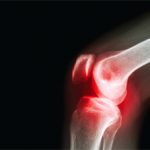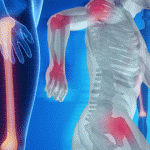Prior research has found that the use of surgery to treat osteoarthritis is increasing, while more conservative treatments, such as physical therapy, are underused. This disparity drove researchers to examine what influences a patient’s treatment choice. They found that a treatment’s characteristics—including a patient’s expectations for effectiveness and risk—affect decision making. Other influences: personal investment and circumstances, as well as support and advice from social networks and healthcare providers…
Placebo Outperforms Glucosamine/Chondroitin Sulfate for Knee OA
(Reuters Health)—Glucosamine sulfate and chondroitin sulfate are not more beneficial than placebo treatments for patients with knee osteoarthritis, a recent trial suggests. In a double-blind study, researchers investigated the efficacy of a medicine that delivered both glucosamine and chondroitin sulfate. The 164 participants all had osteoarthritis and moderate to severe knee pain. Half the participants…

FDA Approves Updated Labeling on Risk of Osteonecrosis of the Jaw for Denosumab
Denosumab’s labeling now says a patient’s risk of developing osteonecrosis of the jaw may increase with prolonged exposure…

Tendinitis & Other Weight Training-Related Injuries
With the increased popularity of CrossFit and other weight-training sports, a recent review examined the risk of injury associated with these activities. Using data from mostly retrospective studies, researchers determined that weight-training sports have a lower risk of injury than team sports, with bodybuilding having the lowest injury rate…
Women on Osteoporosis Drugs Still Need Bone Density Screenings
(Reuters Health)—Women with osteoporosis who take bisphosphonates to help avoid fractures still need to have their bone density monitored, a Canadian study suggests. Researchers who studied more than 6,600 women taking osteoporosis drugs found that for nearly one in five, bone mineral density at the hip actually decreased after the women started taking the medication….

Exercise Therapy Recommended to Manage Knee Osteoarthritis
The benefits of exercise therapy for individuals with knee osteoarthritis (OA) are well known. The ACR strongly recommends both aquatic exercise and land-based aerobic and resistance exercise for managing knee OA.1 A recent Cochrane systematic review and meta-analysis concluded that high-quality evidence supports the use of exercise to reduce pain and improve physical function and…
GI Side Effects Leading Reason for Bisphosphonate Nonadherence
NEW YORK (Reuters Health)—Gastrointestinal side effects are the most common reason osteoporotic women cite for nonadherence to oral bisphosphonate therapy, according to a new survey. “Our findings highlight the importance of low tolerability to nonadherence with osteoporosis therapy and underlines patients’ poor awareness and suboptimal physicians’ involvement in conveying the importance of this therapy,” Dr….

The Gut Microbiome Influences Postmenopausal Bone Loss
Bone health has been successfully improved by using probiotics to influence the gut microbiome in postmenopausal women with osteoporosis. New research has gained insight into this process, uncovering that sex steroid depletion increases gut permeability resulting in inflammation and pathology in mice. Treatment with probiotics also prevents this increase in gut permeability and bone loss associated with sex steroid depletion…

Comment Period Open for FDA Draft Guidance on Osteoporosis Treatments; Plus FDA Rejects Abuse-Deterrent Apadaz
The FDA is currently accepting comments on a draft guideline for osteoporosis treatments, which calls for more research into the long-term effects of drugs on bone quality. Also, the FDA has rejected an application for approval of Apadaz in its current form…

Rheumatology Drug Updates: Etanercept for Pediatric Plaque Psoriasis
Etanercept Submitted for Chronic, Severe Plaque Psoriasis in Children The U.S. Food and Drug Administration (FDA) has accepted the supplemental Biologics License Application for etanercept (Enbrel) for treating pediatric patients with chronic, severe plaque psoriasis.1 The application was submitted in early January 2016 and is based on results of a one-year Phase 3 study with…
- « Previous Page
- 1
- …
- 24
- 25
- 26
- 27
- 28
- …
- 46
- Next Page »